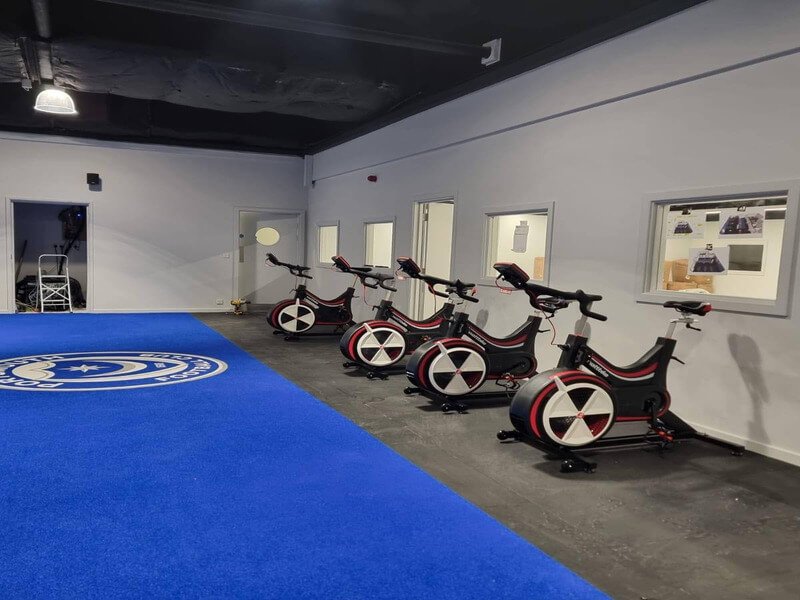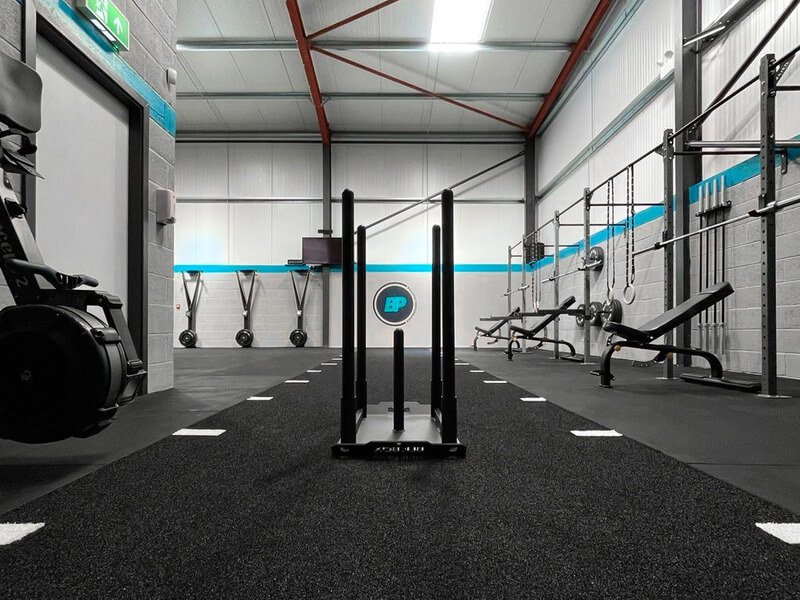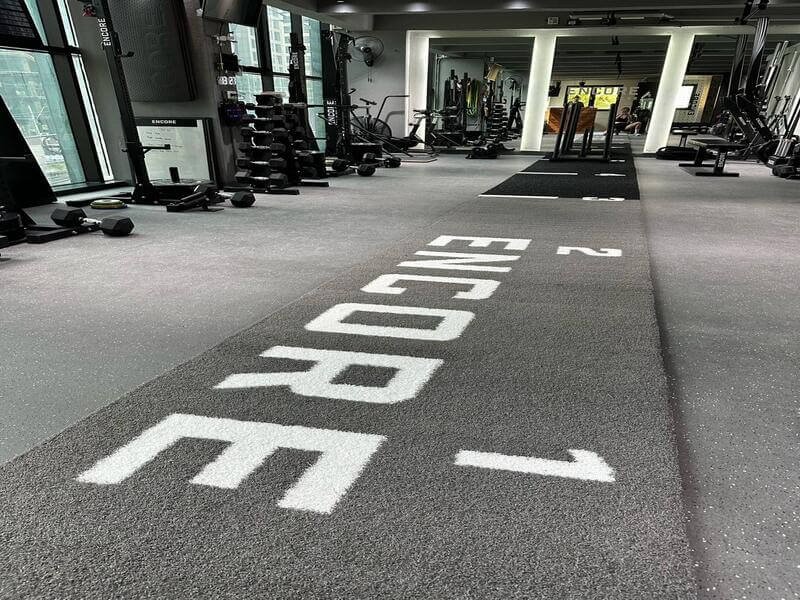Padded turf is artificial grass with an integrated foam backing layer that provides superior impact absorption and comfort compared to traditional artificial turf. This innovative design eliminates the need for infill materials while delivering enhanced safety and performance for various applications.
I’ve been working with artificial turf systems for over a decade, and I can tell you that padded turf represents one of the most significant advances in synthetic surface technology. Unlike conventional artificial grass that relies on rubber granules or sand for cushioning, padded turf incorporates a built-in foam layer directly bonded to the grass backing. This integrated approach creates a more consistent, cleaner, and safer playing surface that I’ve seen transform everything from training facilities to children’s play areas.
The technology behind padded turf centers on a precisely engineered polyurethane (PU) foam layer, typically 5mm thick, that’s permanently attached to the grass fiber backing system. This foam layer works in harmony with the PE grass fibers to create a surface that absorbs impact energy while maintaining excellent durability and weather resistance. What makes this system particularly impressive is how it delivers consistent performance without the maintenance headaches associated with traditional infilled systems.

The transition from traditional infilled turf to padded systems represents more than just a technological upgrade – it’s a fundamental shift toward smarter, more sustainable surface solutions. Let me walk you through exactly what makes padded turf such a game-changer.
What Are the Core Components of Padded Turf Construction?
Padded turf consists of three main elements: PE grass fibers for durability, a 5mm PU foam backing for impact absorption, and advanced bonding technology that creates a unified, maintenance-free surface system.
The construction of padded turf involves sophisticated engineering that I’ve studied extensively through various installations. The grass fibers themselves are manufactured from polyethylene (PE), chosen specifically for its exceptional wear resistance and UV stability. These fibers are tufted into a primary backing material using advanced weaving techniques that ensure long-term fiber retention even under heavy use.
Primary Structure Elements
The foam backing layer represents the heart of the system’s performance advantages. This 5mm polyurethane layer undergoes specialized treatment to achieve optimal density and resilience characteristics. The foam’s cell structure is engineered to provide consistent energy absorption across the entire surface while maintaining excellent recovery properties that prevent permanent compression over time.
The bonding system that connects these components uses advanced adhesive technology specifically formulated for long-term durability. This isn’t simply gluing foam to grass – it’s a chemical bonding process that creates molecular-level adhesion between materials. The result is a composite structure where each component enhances the performance of the others.

Understanding these construction details helps explain why padded turf performs so differently from traditional systems, but the real benefits become clear when you examine its functional characteristics.
How Does Padded Turf Deliver Superior Performance?
Padded turf provides enhanced impact absorption, reduced noise levels, and eliminated infill maintenance through its integrated foam backing system, making it ideal for high-performance applications where safety and convenience are priorities.
From my experience installing these systems in various environments, the performance advantages of padded turf become immediately apparent during use. The integrated foam layer absorbs impact energy more effectively than loose infill materials because it provides uniform coverage across the entire surface. This means every step, jump, or fall encounters the same level of protection regardless of surface wear patterns or infill displacement.
Impact Absorption and Safety Features
The foam backing creates what I call a "controlled energy dissipation zone" beneath the grass surface. When impact occurs, the foam compresses in a predictable manner, absorbing energy while providing a stable platform for rapid recovery. This controlled compression reduces peak impact forces transmitted to joints and bones, which is particularly important for athletic training and children’s play applications.
Noise reduction represents another significant performance advantage that many people don’t consider until they experience it firsthand. The foam layer effectively dampens sound transmission, reducing footfall noise by approximately 60% compared to hard surfaces. This makes padded turf excellent for indoor applications or areas where noise control is important.
The elimination of infill materials removes multiple performance variables that can affect traditional systems. There’s no infill migration, no compaction issues, and no contamination concerns. The surface performs consistently from day one through years of use without requiring periodic infill redistribution or replacement.

These performance characteristics translate into real-world advantages that make padded turf particularly valuable for specific applications where traditional turf falls short.
What Are the Key Advantages of Padded Turf Systems?
The primary advantages include enhanced safety through superior impact protection, dramatically reduced maintenance requirements, and simplified installation processes that make padded turf cost-effective for both permanent and temporary applications.
In my years of working with different turf systems, I’ve seen how padded turf addresses many of the pain points that plague traditional artificial grass installations. The safety advantages alone justify the investment for many applications, but the operational benefits often provide the strongest business case for adoption.
Safety and Protection Benefits
The continuous foam backing creates what safety engineers call "critical fall height protection" – the ability to safely absorb impact energy from falls up to specific heights. I’ve witnessed this protection in action at children’s playgrounds where padded turf has significantly reduced injury rates compared to previous surface materials.
For athletic applications, the joint protection provided by the foam layer reduces fatigue during extended training sessions. Athletes report feeling less impact stress, which allows for longer, more productive training periods. This is particularly valuable for agility training, plyometric exercises, and other high-impact activities.
Maintenance and Operational Advantages
The maintenance advantages of padded turf become apparent immediately after installation. There’s no infill to maintain, redistribute, or replace. Surface cleaning involves simple brushing or pressure washing without concern for infill displacement. This simplicity reduces ongoing maintenance costs by approximately 70% compared to traditional infilled systems.
The installation and removal advantages make padded turf particularly valuable for temporary applications. I’ve overseen installations that were completed in hours rather than days, with equally quick removal when needed. This flexibility opens up applications that would be impractical with traditional systems.

These advantages make padded turf suitable for a much broader range of applications than traditional artificial grass systems.
Where Is Padded Turf Most Effectively Applied?
Padded turf excels in athletic training facilities, children’s play areas, indoor commercial spaces, and temporary event applications where safety, cleanliness, and flexibility are paramount concerns.
Through my experience with diverse installations, I’ve identified specific application categories where padded turf provides exceptional value. These aren’t just theoretical applications – they’re proven use cases where padded turf consistently outperforms alternatives.
Athletic and Training Applications
Fitness centers and training facilities represent the strongest application category for padded turf. The combination of impact protection, durability, and cleanliness makes it ideal for functional training areas, agility courses, and multi-purpose athletic spaces. I’ve installed systems in facilities ranging from professional sports complexes to community fitness centers, and the performance satisfaction rates are consistently high.
Boxing gyms and martial arts facilities particularly benefit from the impact absorption characteristics. The foam backing provides essential protection during floor exercises while maintaining the stability needed for dynamic movements. The easy cleaning and sanitization capabilities are crucial for these high-use environments.
Safety-Critical Applications
Children’s play areas, both indoor and outdoor, represent another strong application category. The continuous impact protection eliminates the safety concerns associated with traditional playground surfaces while providing an attractive, comfortable play environment. Parents and facility managers consistently report higher satisfaction with padded turf installations.
Indoor commercial spaces use padded turf for decorative applications where the maintenance advantages and noise reduction capabilities provide operational benefits. Corporate offices, retail displays, and hospitality applications all benefit from the system’s versatility and performance characteristics.

The versatility of padded turf continues to expand as more applications discover its unique combination of benefits.
How Should You Evaluate Padded Turf for Your Application?
Evaluate padded turf based on your specific safety requirements, maintenance capabilities, usage intensity, and long-term cost considerations rather than initial purchase price alone.
Making the right decision about padded turf requires understanding how its characteristics align with your specific requirements. I’ve helped numerous clients through this evaluation process, and the decision framework I’ve developed focuses on matching system capabilities with application demands.
Cost-Benefit Analysis Framework
The financial evaluation of padded turf must consider total cost of ownership rather than initial material costs. While padded turf typically costs 20-30% more initially than traditional systems, the maintenance savings and extended service life often result in lower total costs over the system’s lifespan.
Installation costs are typically lower for padded turf due to the eliminated need for infill materials and the simplified installation process. Removal and disposal costs are also significantly reduced when system replacement becomes necessary. These factors become particularly important for temporary installations or applications where flexibility is valuable.
Application Matching Considerations
Usage intensity significantly impacts the relative value of padded turf. High-traffic applications that would require frequent infill maintenance with traditional systems benefit most from the padded approach. Low-intensity applications may not fully utilize the advantages that justify the higher initial cost.
Environmental factors also influence the decision. Indoor applications maximize the benefits of noise reduction and cleanliness, while outdoor applications must consider UV exposure and weather resistance characteristics. The foam backing performs well in both environments but provides different primary benefits.

Understanding these evaluation criteria helps ensure that padded turf investments deliver expected returns and performance outcomes.
What Does the Future Hold for Padded Turf Technology?
Emerging developments in foam chemistry, fiber technology, and sustainable materials are expanding padded turf capabilities while reducing environmental impact and improving performance characteristics.
The padded turf industry continues evolving rapidly as material science advances and application demands increase. I’m seeing innovations that will further expand the technology’s capabilities and market adoption over the coming years.
Technological Advancement Trends
Foam chemistry improvements are producing backing materials with enhanced performance characteristics. New formulations provide better energy absorption, improved durability, and enhanced environmental resistance while maintaining the installation and maintenance advantages of current systems.
Fiber technology advances are creating synthetic grass that more closely mimics natural grass appearance and feel while maintaining superior durability. These improvements are expanding padded turf adoption in applications where aesthetic considerations are important alongside performance requirements.
Market Development and Standardization
Industry standardization efforts are establishing performance benchmarks and testing protocols that will improve product consistency and selection processes. These standards will help specifiers and end users make more informed decisions while driving continued innovation among manufacturers.
Environmental sustainability initiatives are producing recycled and bio-based materials for both foam backing and grass fiber components. These developments address growing environmental concerns while maintaining performance standards required for demanding applications.
The combination of technological advancement and market maturation positions padded turf for continued growth across diverse application categories where its unique advantages provide value.
Conclusion
Padded turf represents the future of artificial grass technology, combining superior safety, reduced maintenance, and enhanced performance in an innovative integrated system.
Ready to experience the advantages of padded turf for your application? Contact us today for a free consultation and sample evaluation. Our technical team will help you determine if padded turf is the right solution for your specific requirements and provide detailed cost-benefit analysis for your project. Don’t wait – get your free samples and personalized quote now to see how padded turf can transform your space while reducing long-term costs and maintenance requirements.

![6987a4a4206d679816fa40786c0f8021[1]](https://meettfit.com/wp-content/uploads/2025/05/6987a4a4206d679816fa40786c0f80211.jpg)